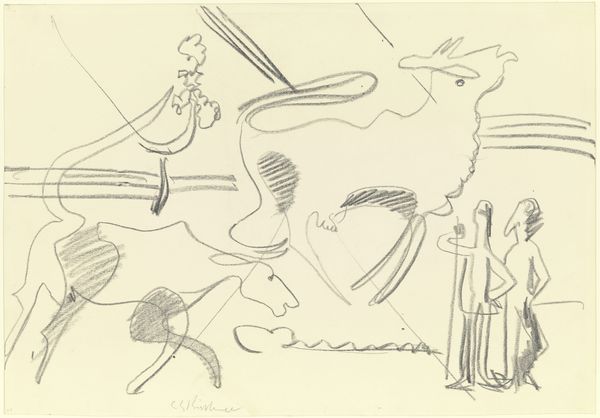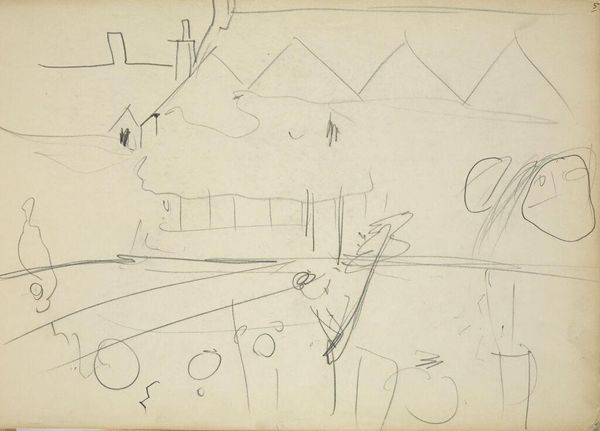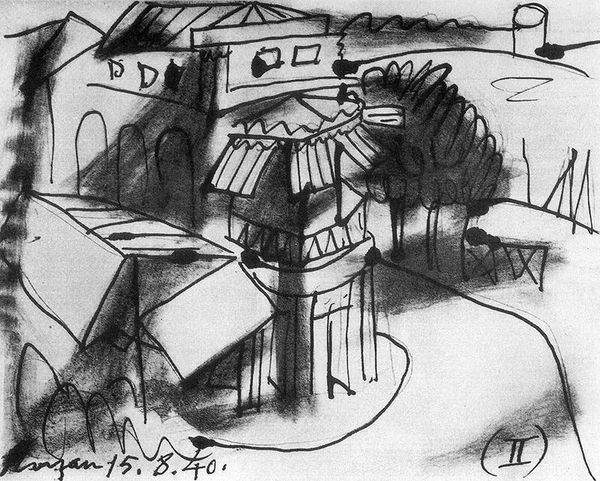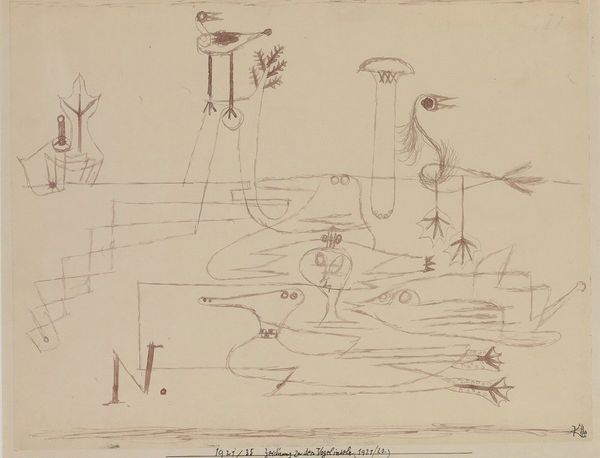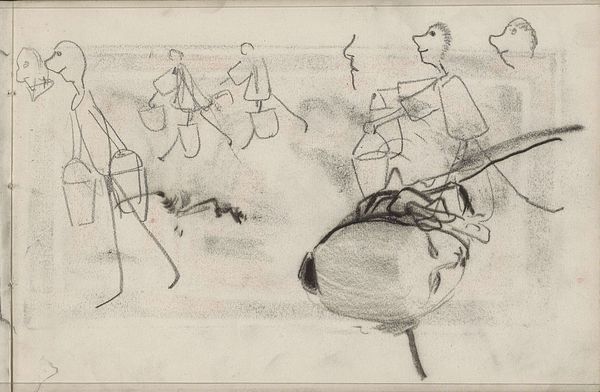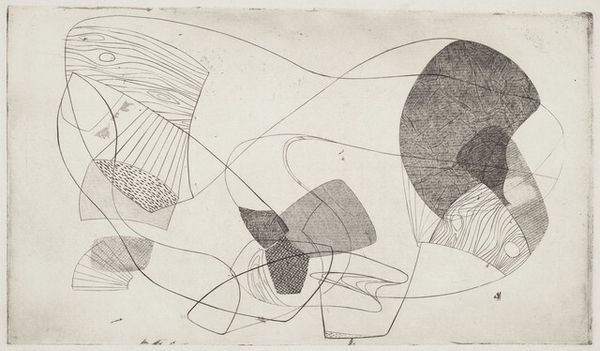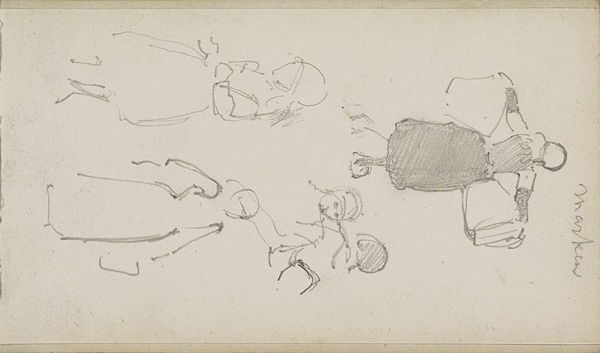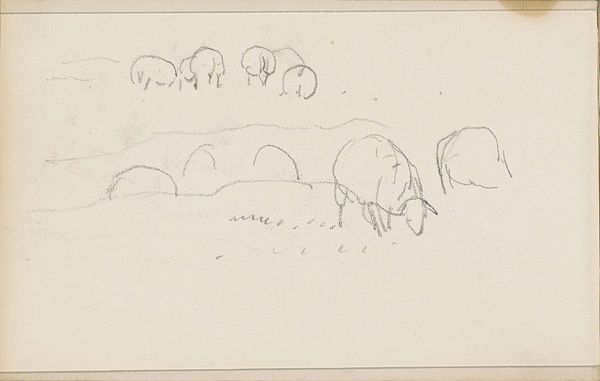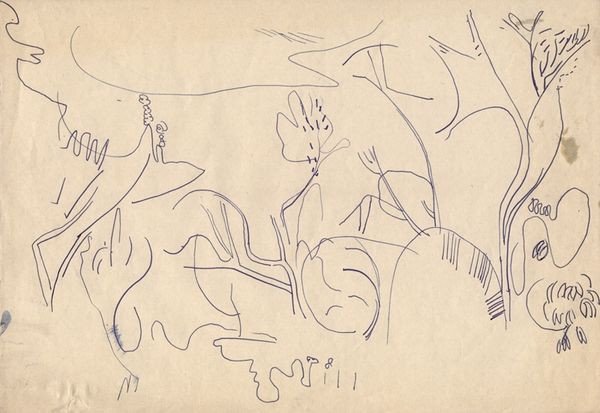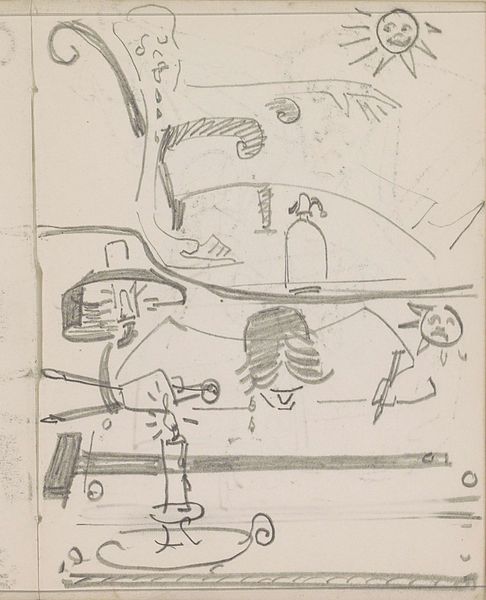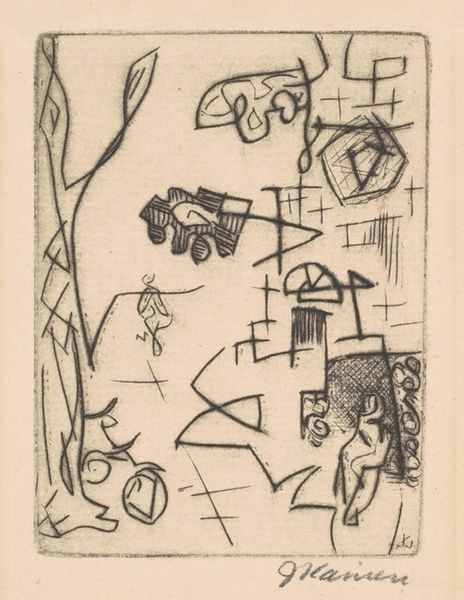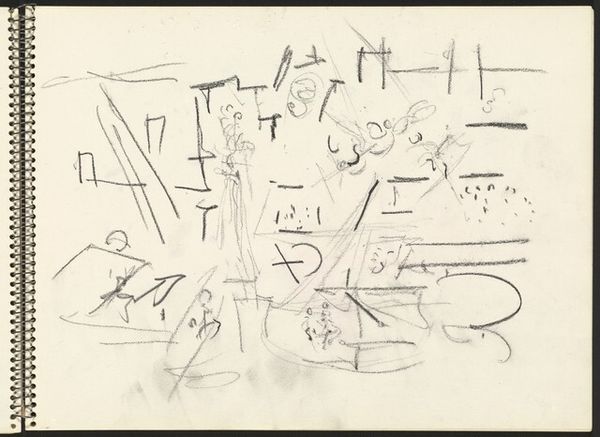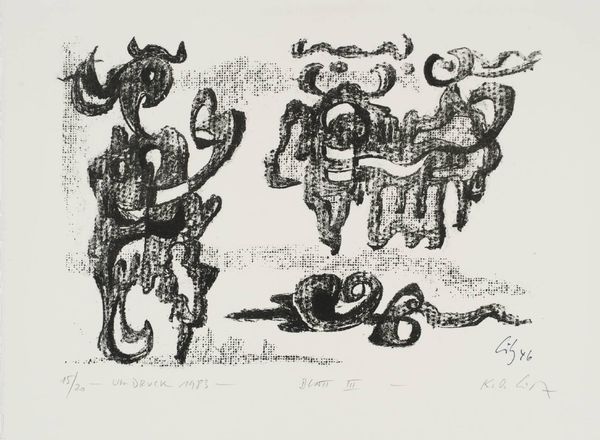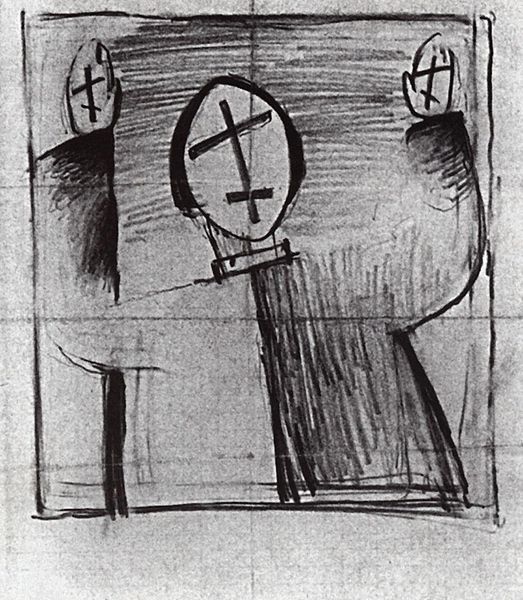
drawing, print, paper, pencil, graphite
#
drawing
#
cubism
#
comic strip sketch
#
thin stroke sketch
#
quirky sketch
#
animal
#
sketch line
# print
#
incomplete sketchy
#
paper
#
form
#
linework heavy
#
idea generation sketch
#
sketchwork
#
sketch
#
pencil
#
abstraction
#
line
#
graphite
#
sketching
#
modernism
#
initial sketch
Copyright: Pablo Picasso,Fair Use
Editor: This drawing, "Bull (study)" from 1946 by Pablo Picasso, it's done with pencil, graphite, and probably print on paper. It reminds me of a page from a sketchbook, where the artist is playing around with shapes and ideas. What do you see in this piece? Curator: Well, immediately I notice the layered imagery—a fascinating demonstration of reduction and symbolic construction. The bull, an ancient symbol of power, virility, even sacrifice, is here deconstructed into its barest essentials. Notice how each iteration carries a different emotional weight. Do you feel that? Editor: I do, a bit. Some are almost comical, like little cartoons, but others are much more imposing. Curator: Exactly! Think about Picasso's cultural context: Spain, bullfighting, a deep-seated respect, and perhaps fear, of the animal's primal energy. Each line carries the weight of that history, but he's consciously stripping it away, layer by layer. Why do you think he repeated the subject so many times on one page? Editor: Maybe to try different approaches, find the most essential form? Curator: Precisely! It is the anatomy of an archetype. He is excavating cultural memory and rebuilding it before our eyes, suggesting that even the most potent symbols are, in essence, constructions. Does the final, more shaded-in bull carry a different meaning, contrasted to the others? Editor: I think so. It feels heavier, more present somehow. All the playful versions led to that stronger statement. I see it now: he's distilling an essence, not just drawing a bull. Curator: Indeed. We started with lines but ultimately unearthed layers of history, psychology, and cultural identity. This study then functions almost like a visual poem!
Comments
No comments
Be the first to comment and join the conversation on the ultimate creative platform.
